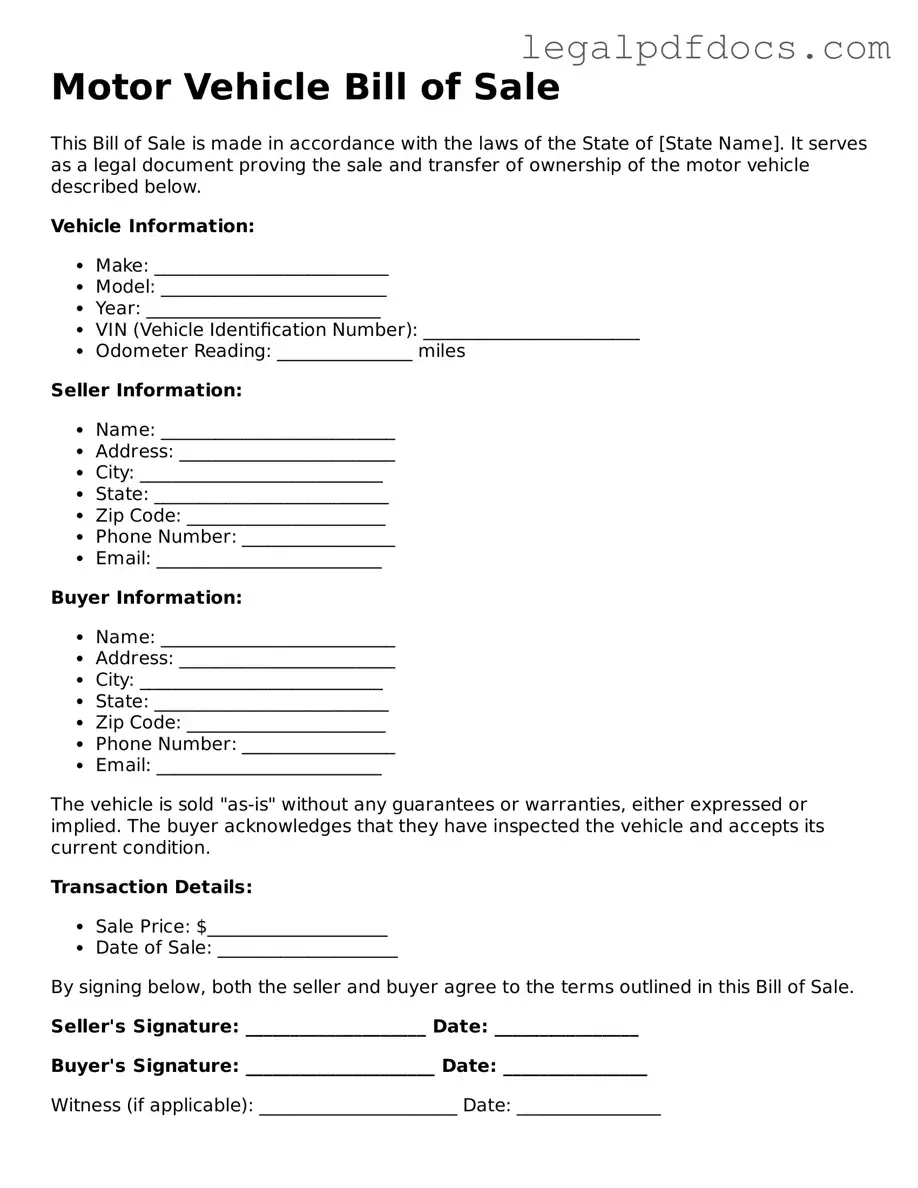Motor Vehicle Bill of Sale Template
The Motor Vehicle Bill of Sale is a legal document that serves as proof of the transfer of ownership from one party to another for a vehicle. This form outlines essential details such as the vehicle's make, model, year, and identification number, along with the buyer's and seller's information. Understanding how to properly complete this form is crucial for ensuring a smooth transaction and protecting both parties' interests.
Ready to fill out the Motor Vehicle Bill of Sale form? Click the button below to get started!
Open Motor Vehicle Bill of Sale Editor Here
